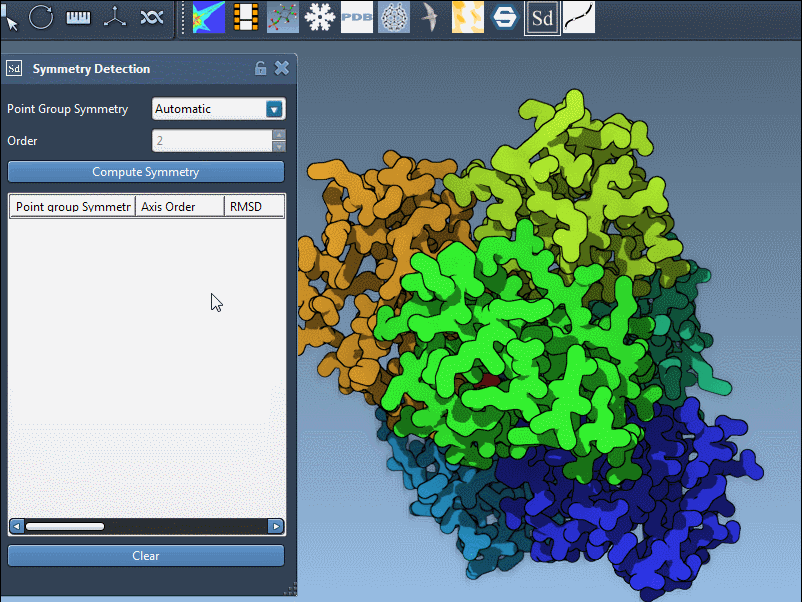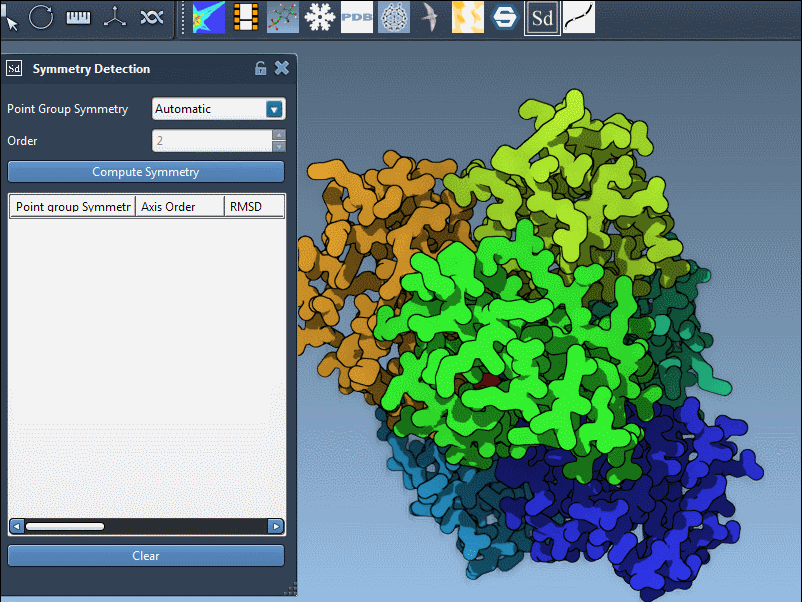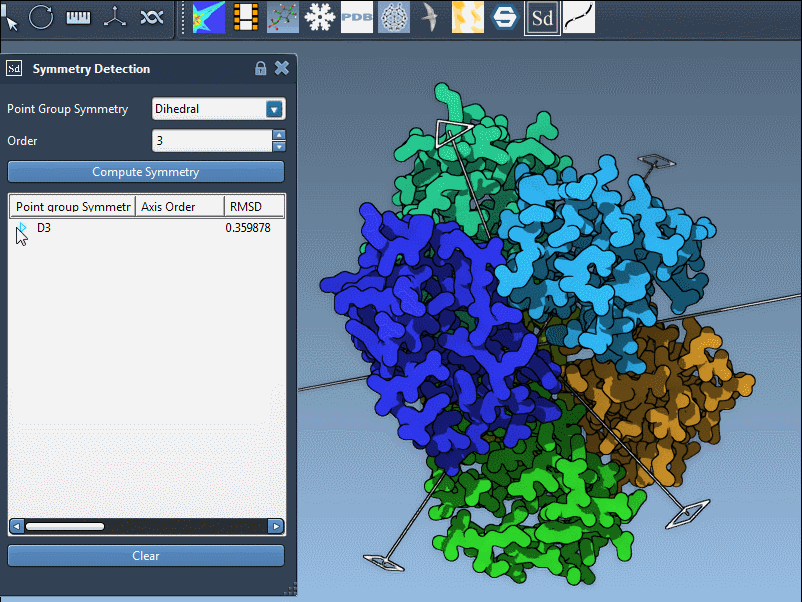When working with complex biological assemblies—viral capsids, oligomeric proteins, or large multimeric structures—leveraging their symmetry can significantly reduce computational costs, simplify analysis, and enhance structural interpretation. But what happens when multiple symmetry groups are detected for a single structure?
In SAMSON’s Symmetry Detection extension, large assemblies may exhibit several symmetry possibilities. This isn’t a bug—biological structures often have pseudo-symmetries or alternative symmetry interpretations. As a molecular modeler, choosing the right symmetry group helps you work with the most accurate representation of your system.
Why Multiple Symmetries May Appear
Large protein assemblies can present several plausible symmetry groups. Detection algorithms in SAMSON try to identify all valid candidates, especially when dealing with repetitive architecture. For instance, the structure 1B4B (a multimeric protein complex) reveals a D3 (dihedral of order 3) symmetry, among others.

How to Choose the Right Group
Here’s a practical guide to selecting the most appropriate symmetry group when several are detected:
- Prefer higher-order symmetries with lower RMSD: Symmetry groups are ranked by the root-mean-square deviation (RMSD) between the reference unit and its generated symmetric copies. A lower RMSD suggests a better geometric match.
- Interrogate visual fits: Click on each group to highlight its primary axis or axes. This visual inspection is often informative—poorly matched groups will display misaligned or overlapping atoms.
- Use structural expectation: If the literature or experimental data suggest a particular symmetry, you can manually select it within the extension. For example, if you expect a
D3symmetry, choose it explicitly from the dropdown menus.
Manual Group Selection
If automatic detection doesn’t prioritize your known symmetry (e.g., from crystallography studies), you can override it. The dropdown interface in the extension allows specifying the symmetry group (Cn, Dn, etc.) and its order.

Exploring Axes and Fine-Tuning
Each detected symmetry group may consist of several axes. To investigate them:
- Single-click an axis to highlight it in the viewport—a quick way to check spatial orientation.
- Double-click an axis to align the camera straight along it. This is useful for preparing publication-ready figures or performing geometric measurements.

Why This Matters
Choosing the right symmetry group is not just about aesthetics—it directly impacts simulation setup, system preparation, and downstream modeling. For example, reduced systems based on the asymmetric unit of the correct symmetry can lower computational costs significantly, especially in all-atom MD simulations.
Conclusion
Next time you detect multiple symmetry groups in SAMSON, pause to check RMSD, align the axes visually, and confirm with your biological expectations. This small step can lead to more accurate models and efficient simulations.
To learn more, visit the full documentation at this tutorial page.
SAMSON and all SAMSON Extensions are free for non-commercial use. You can download SAMSON at https://www.samson-connect.net.





